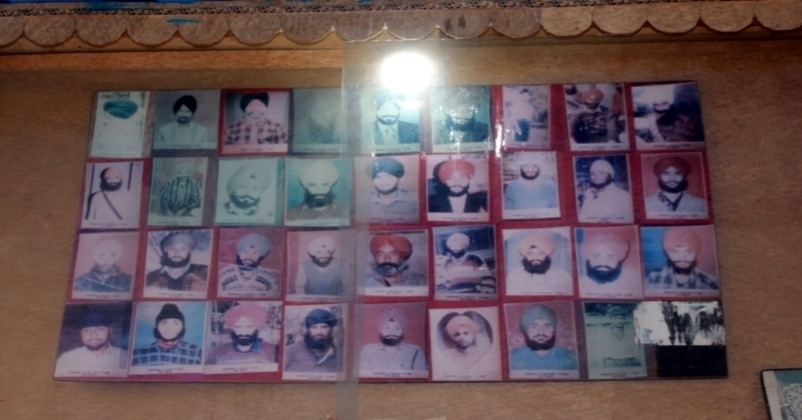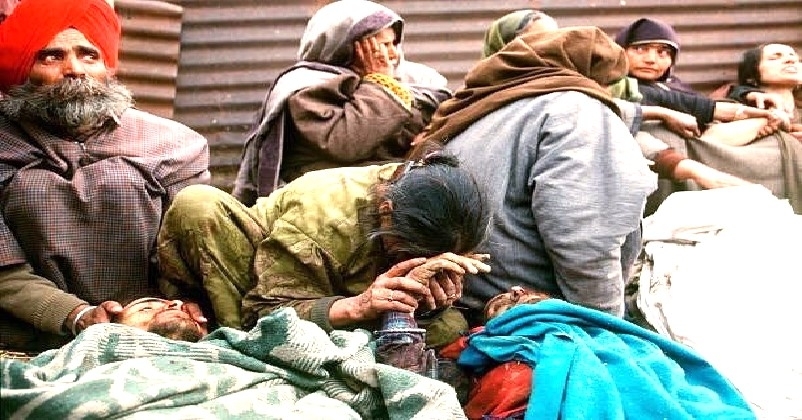The Chattisinghpura massacre; The gruesome killings of 40 Sikhs by LeT terrorists
26 Apr 2020 21:46:00

Twenty Years ago, in 2000, nearly 40 innocent Sikhs were murdered in Chattisinghpura of south Kashmir’s Anantnag district by a group of masked gunmen disguised in army uniforms. The murderers wearing the uniform of the Indian army were terrorists of Lashkar-e-Taiba, the terror group backed by Pakistan.
On the evening of 20th March 2000, the Sikh-dominated Chattisinghpura in the valley was entirely engaged with its routine occupancy like other days. While some worshippers were returning from a nearby Gurudwara after evening prayers some were occupied by the roadside conversing with each other. Much to their horror and distress, a dreadful event was waiting for them to happen.
A group of masked and armed gunmen wearing army uniforms barged into the village through a narrow lane from the back, split into two groups and rounded up the Sikhs. Some of them stormed into houses located close to the gurudwaras and forced the people out. The terrorists lined all of them outside the holy place, Shaukeen Mohalla Gurudwara, 150 meters down the road. Much before those clueless Sikhs could realize anything, 8-10 killers opened fire at point-blank range. The firing continued for a few minutes and took away 36 innocent lives on the spot, three more succumbed to bleeding profusely and one of them got seriously wounded. But the firing did not stop there. Before the cold-blooded murderers of Lashkar-e-Taiba fled the spot, they fired at the blood-soaked bodies a few times more just to assure everyone was dead.
The gruesome massacre sent shockwaves across India, a three-day mourning was held for the massacred victims
The brutal killings on the dreadful night left around 30 women widowed, and scores of children orphaned. The peaceful village turned into a pool of blood with a pile of bodies lying around and only terrible scenes imprinted on the minds of those who survived. Following the mass-murder, a three-day mourning was held, the bodies of the victims were cremated at a local temple in the mainly Sikh village of Chattisinghpura, 70 km south of Srinagar. A crowd of more than 1000 people had gathered to take part in the funeral of the murdered Sikhs. Hundreds of Sikhs gathered in the valley to protest the brutal attack on Sikhs and raised slogans demanding retaliation and justice. Since then, every year on March 20th, Sikhs around the nation commemorate their loved ones lost in the massacre and observe three days of mourning.
Following the disturbing incident, the then Indian PM Atal Bihari Vajpayee described the attack as an act of ethnic cleansing and expressed his grief consoling the community that “We have the means and the will to eliminate the menace.” Since the Sikhs were brutally killed in Chattisinghpura village of Anantnag district of Jammu and Kashmir on the eve of the then US President Bill Clinton’s state visit to India, it was condemned from all corners. Former US president Clinton too condemned the attack calling it brutal.

Five years later of the killings, in 2005, Sikh organizations demanded a CBI probe and deeper state inquiry into the details of the massacre with stringent punishment to the guilty. They also asked for details to be made public and subsequently an inquiry was ordered but no evident steps were seen to be taken.
In 2011, two terrorists named Mohammad Suhail Malik from Sialkot and Waseem Ahmed from Gujranwala of Pakistan confessed while in Indian custody about being involved in the massacre at the direction of terror group LeT. Terrorist Suhail was the nephew of LeT co-founder Hafiz Muhammad Saeed. He was however later acquitted of the charges by a Delhi court. Later, when Pakistani terrorists’ associate David Headley was arrested in connection with Mumbai attacks of 2008, he re-confirmed the National Investigation Agency that terror group Lashkar-e-Taiba had carried out the Chattisinghpura massacre. He even identified LeT terrorist named Muzzamil as part of the terror group which carried out the gruesome killings to create communal tension just before former US president Clinton’s visit.
As the massacre also coincided with the visit of US president Bill Clinton to India, it was highly condemnable and pointed fingers at lapses in security. Those who witnessed the horrible incident that night, to date have preserved the haunting memories of the massacre but have lost hope of justice in the past twenty years as the governments came and went but the killings remained shrouded in mystery.